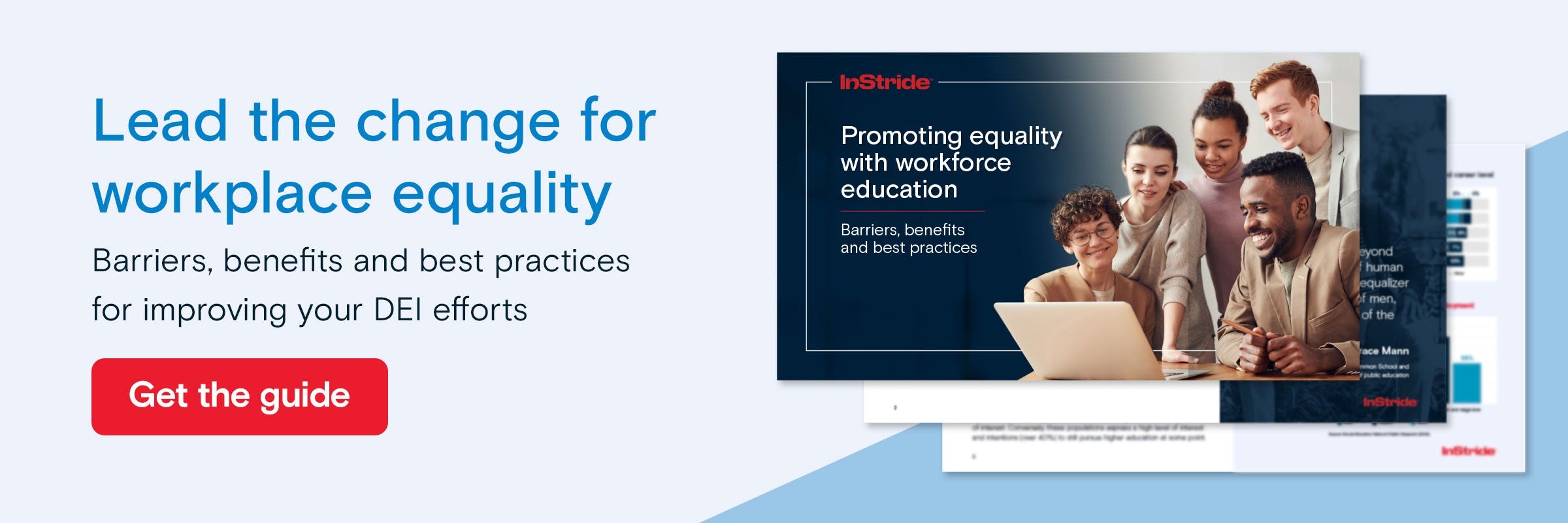Employee underperformance is a widespread and costly problem that many businesses experience. One study from Gallup revealed that businesses lose around $3,400 for every $10,000 they pay to every disengaged employee.
Strategies such as regular performance meetings, comprehensive goal-setting practices and performance tracking systems are all designed to keep tabs on performance and address concerns as they arise.
But even though most organizations already have one (or multiple) of these processes in place, underperformance can still be prevalent at the individual or even team-wide level. Trying to correct poor performance based on KPIs alone doesn’t always paint an accurate picture of what’s actually causing an individual or business unit to fall behind on goals.
First, let’s dive into some of the most common causes of workplace underperformance. Then, we’ll review a few solutions you can employ to help your team members reach their full potential.
Common causes of underperforming employees
When looking at causes of underperformance, it’s important to remember that it’s rarely an intentional decision. Performing below the standard naturally jeopardizes an individual’s job — something most people want to avoid.
Many of the factors that contribute to poor performance have to do with external circumstances related to the working environment rather than the individual themselves. This means employers have the ability to identify and address external, workforce environment factors that can lead to underperformance.
Here are some common causes to be aware of:
- Lack of growth opportunities
Employees want to know that their day-to-day efforts are going to pay off and lead to career advancement. A recent Gartner study found that 40 percent of employees surveyed cited lack of advancement opportunities as one of the main reasons why they left their job. This can also have a detrimental effect on overall motivation, leaving employees feeling stagnant and uninspired to do more than the bare minimum.
- Lack of learning opportunities
Learning and development (L&D) is essential to a thriving, growth-oriented workforce, with 94 percent of workers reporting they would stay with their employer for longer if they were provided with more access to learning opportunities.
But if your workplace learning programs are ineffective, it can cause significant challenges to employees at an individual and team-wide level. When employees aren’t given the ability to continue learning and honing their skills, this not only hurts engagement but also contributes to widening skill gaps. As technology rapidly advances, lack of employee education can leave entire teams missing critical skills required to do their jobs.
- Poor work/life balance
It’s no surprise that having a poor work/life balance can lead to underperformance. Long hours, little time for rest and an inflexible schedule can lead to chronic exhaustion and take a toll on overall employee health and wellness.
Every employee has unique circumstances that should be taken into consideration. For example, parents may need to work non-traditional hours to accommodate their children’s school schedules.
- Bad working environment
A negative working environment can take many different forms. For some, a bad working relationship with a colleague or manager might make the workplace intolerable. Underrepresented employees who experience microaggressions or unconscious bias from supervisors and colleagues may also find that these experiences contribute to a work environment that causes them to feel uncomfortable.
Other signs of a negative work environment include favoritism, high turnover, low morale, lack of recognition and more. All of these factors have an influence on the quality of an individual’s performance.
- Lack of diversity
Despite the efforts made by businesses to further diversity, equity and inclusion (DEI) in the workplace, inequalities remain prevalent across every industry. A lack of diversity can be a major driver of underperformance for many reasons. Countless studies have shown that a more diverse workforce leads to greater innovation, creativity and engagement.
Additionally, it can be difficult for employees from underrepresented groups to feel motivated or inspired to advance if there’s a lack of diversity in leadership positions within the organization.
Identifying underperforming employees
While underperformance in the workplace may seem difficult to pinpoint, usually it can be broken into two types: competence-based and motivation-based. These two types of underperformance can be spotted by signs such as changes in mood or work quality, lack of engagement, absenteeism or not meeting objectives.
How to address employee underperformance
The cost of employee underperformance can't be overlooked: a disengaged employee can cost you up to 34% of their salary. That's why actively seeking out ways to mitigate underperformance is critical.
Many organizations evaluate employee and team performance by looking at data. In fact, you likely already have a system in place that’s designed to closely monitor individual and team KPIs. But in order to truly address the problems causing underperformance in your workforce, you may need to take a more nuanced approach that looks at the human side of the story.
Here are a few qualitative solutions you can engage to boost engagement, motivation and productivity:
- Improve internal communication
The first place to start when addressing underperformance is with the people in charge: managers. Managers play a critical role in the success of a team and the individuals that are part of it. Encourage managers to ask employees what aspects of life and work might be affecting their performance, as well as what they need from their organization, leadership and work environment to help them feel more motivated and engaged.
Better communication also means setting clear expectations for employees around performance goals and having transparency around company policies, procedures and benefits that are there to guide them.
- Provide access to continued education and learning
Your L&D initiatives are only effective if employees are actually able to take advantage of them. To address skills gaps and foster continuous development, it’s important that any learning or education programs are easily accessible — regardless of an employee’s previous academic background or financial circumstances.
For example, if you currently have a tuition assistance program (TAP) in place, consider moving away from a reimbursement model that requires upfront payment from the employee. Instead, implement a direct-billing workforce education program that takes the financial burden off the individual and allows all team members to take advantage of educational opportunities.
- Allow for greater flexibility
In today’s world of remote and hybrid work, many organizations are leaving behind the traditional belief that all employees have to report to an office. This type of working structure allows employees greater flexibility to organize their lives in a way that allows for improved work/life balance.
If your organization has the systems in place to support long-term hybrid or remote work, it can greatly benefit employees who have personal circumstances that require them to work outside of traditional business hours or from their homes.
- Revisit company culture
As with any aspect of a company, culture needs to evolve in a way that’s beneficial to the business and its people. What may have been a core value of company culture many years ago could evolve to be an outdated principle that’s alienating employees or contributing to a negative work environment. Likewise, it’s acceptable to periodically introduce new values to the culture that are intended to move the business forward.
Either way, it’s critical for business leaders to recognize that company culture has a major influence on the way employees perform.
- Prioritize diversity, equity and inclusion
A true commitment to DEI is more than just a press release or a training workshop, it means integrating diversity practices into all aspects of company culture. People want to know that their employer is authentic in its commitment — not just checking a box. While this doesn’t happen overnight, there are countless small strides you can make to ensure you’re cultivating a workplace that’s inclusive. Doing so helps underrepresented employees feel safe and supported in their work environment — enabling them to show up to work as their most authentic selves.
The causes of workforce underperformance are more nuanced than the numbers might first indicate. To successfully address underperformance at the individual or team level, it’s important to look into the human causes and try to support team members with better opportunities for growth, improved inclusivity and greater transparency.
Providing employees with upskilling and reskilling opportunities is a major driver of improved engagement. Download this step-by-step guide to unlock 5 ways to rapidly reskill your workforce.


